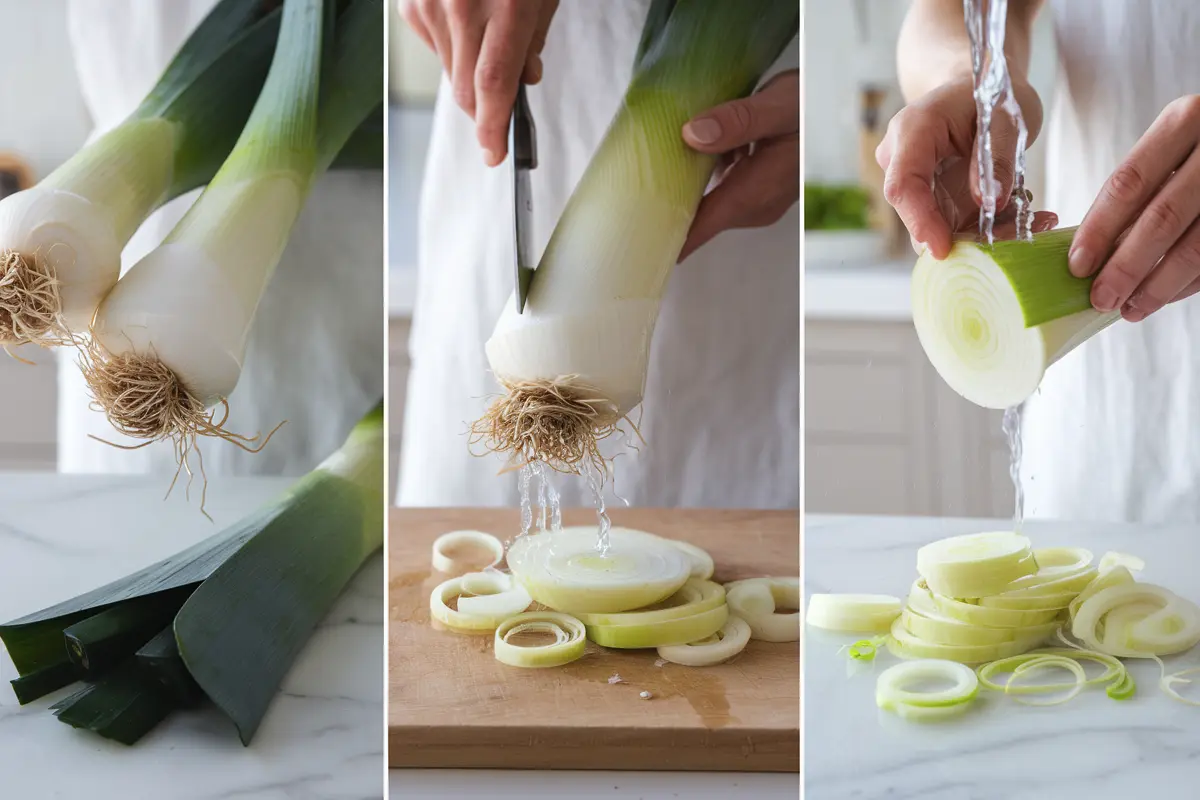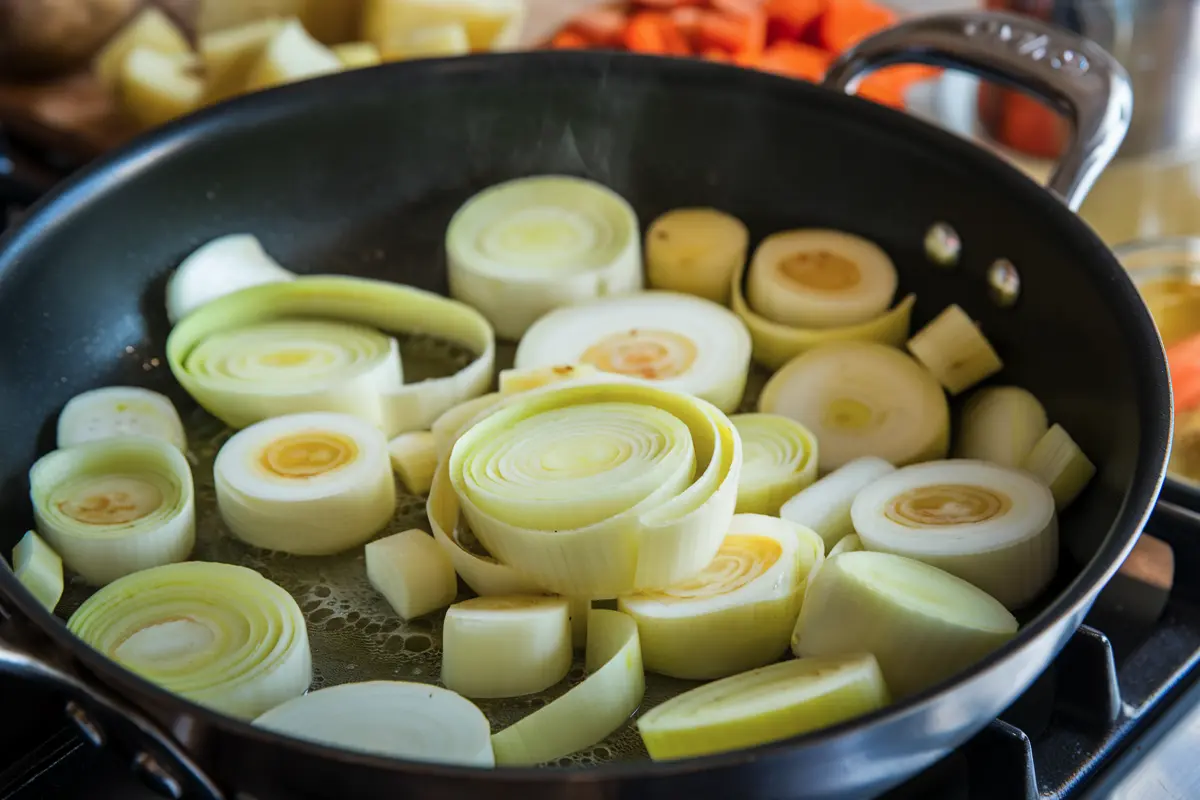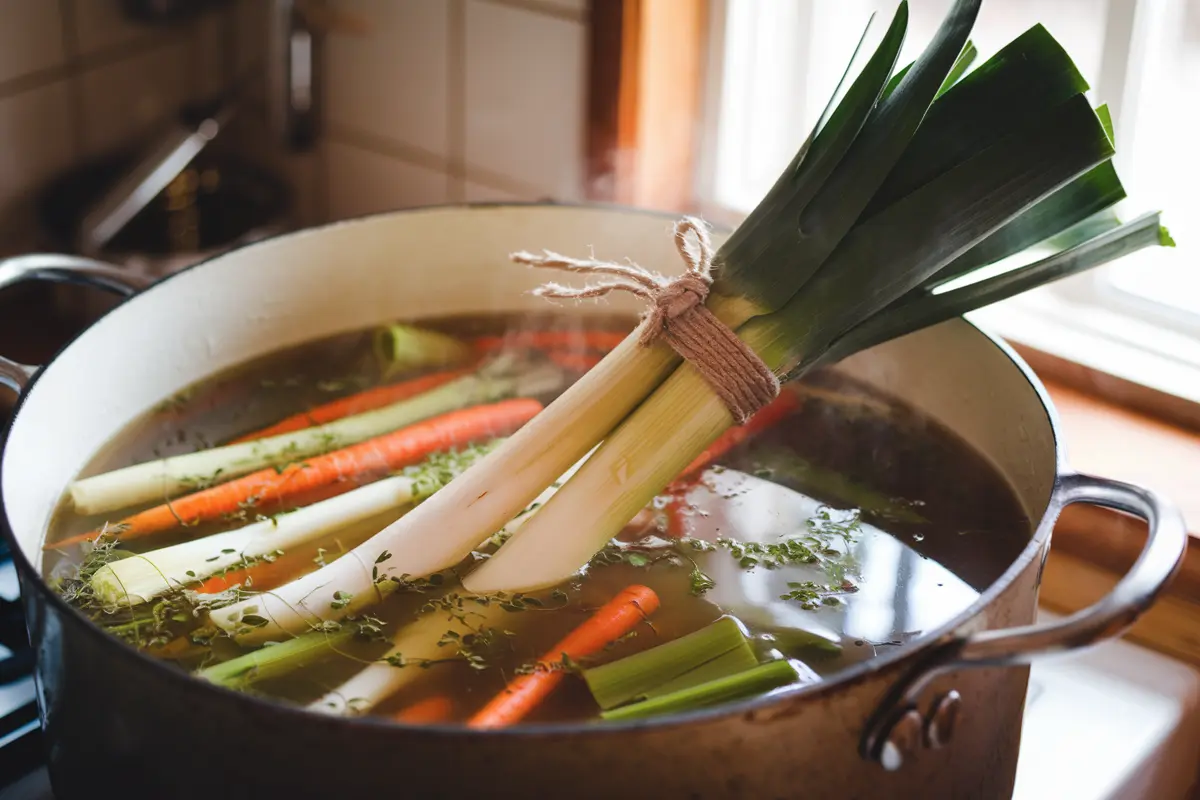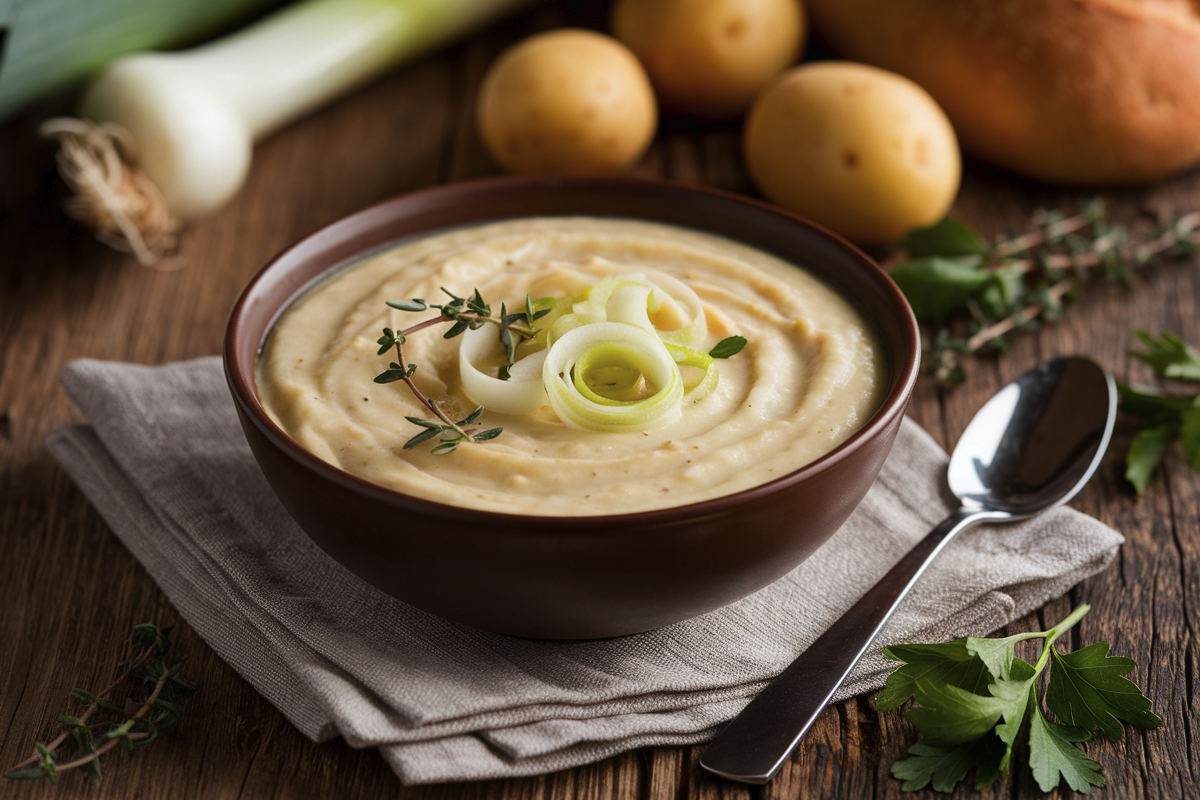Leeks are a versatile vegetable that can add a depth of flavor to soups and other dishes without overwhelming the palate. With their mild, sweet taste, they are often preferred over onions in many recipes. But when it comes to making soup, which part of the leek should you use? In this comprehensive guide, we will explore the best parts of the leek to use in soup, how to prepare them, and some innovative ways to use the entire leek, ensuring that nothing goes to waste.
1. Understanding the Structure of a Leek
Leeks are members of the allium family, which includes onions, garlic, and scallions. They have a cylindrical shape with a white base that transitions to light green and then dark green leaves at the top. Each part of the leek has its own characteristics, which can influence how it’s used in cooking:
- White Base: The most tender and flavorful part, ideal for most recipes.
- Light Green Section: Slightly firmer than the white part, but still tender and flavorful.
- Dark Green Tops: Tough and fibrous, usually discarded or used for flavoring broths and stocks.
2. The Best Parts of the Leek for Soup
For soups, the white and light green parts of the leek are typically the best to use. These parts are tender and have a mild, sweet flavor that melds beautifully into soups, providing a rich, onion-like taste without overpowering other ingredients. The white section, in particular, is prized for its softness and subtlety, making it the go-to part for most recipes, especially in classic dishes like potato leek soup.
3. How to Prepare Leeks for Soup

Properly preparing leeks is crucial, as they can often trap dirt between their layers. Follow these steps to ensure your leeks are clean and ready for cooking:
- Trimming: Start by trimming off the root end and the dark green tops. While the dark green leaves can be tough and fibrous, don’t throw them away; they can be used to add flavor to homemade stocks and broths.
- Cleaning: Slice the leeks lengthwise and fan them out under running water to remove any trapped dirt. It’s important to clean them thoroughly, as dirt can hide in the many layers of the leek.
- Slicing: Once cleaned, slice the leeks into thin half-moons or rings, depending on your recipe. The size of the slices will influence how quickly they cook and blend into your soup.
- Blotting: After slicing, blot the leeks dry with a paper towel to remove excess water, which can dilute the flavor of your soup.
4. Cooking Techniques: Sautéing, Simmering, and Blending

Leeks can be cooked in a variety of ways, each bringing out different aspects of their flavor. Here’s how to make the most of them in your soup:
- Sautéing: Start by sautéing the sliced leeks in a bit of butter or olive oil. This process softens the leeks and enhances their sweetness, creating a rich base for your soup.
- Simmering: After sautéing, simmer the leeks with other ingredients like potatoes, carrots, or celery. Simmering allows the flavors to meld together, resulting in a harmonious soup.
- Blending: For a smooth, velvety texture, blend the soup after simmering. This technique is especially popular in cream-based soups like Vichyssoise, a cold leek and potato soup.
5. The Role of Dark Green Leek Tops in Soup
While the dark green tops of the leek are often discarded due to their tough texture, they still have culinary value, especially in soups:
- Flavoring Stocks: The dark green tops are perfect for adding depth to homemade stocks and broths. Simply add them to the pot and remove before serving, as their fibrous texture doesn’t break down well in soups.
- Bouquet Garni: Bundle the dark green leaves with other herbs like thyme and bay leaves to create a bouquet garni. This can be added to your soup for extra flavor and easily removed before serving.

6. Creative Uses for the Entire Leek
Leeks are a vegetable where every part can be used, reducing waste and adding flavor to your dishes:
- Leek Powder: Dehydrate the green tops and grind them into a powder. This can be used as a seasoning in soups and other dishes, adding a subtle, onion-like flavor.
- Leek Oil: Infuse olive oil with leek tops for a flavorful finishing oil. Drizzle this over soups or roasted vegetables for an added layer of flavor.
- Roasting: Place the dark green tops under roasting meats or vegetables. They will impart their flavor during the cooking process and can be discarded afterward.
7. Leek-Based Soup Recipes
Leeks are versatile and can be used in a variety of soups. Here are some classic recipes that highlight the leek’s unique flavor:
- Potato Leek Soup: A comforting, creamy soup that showcases the delicate flavor of leeks. This soup can be served hot or cold, making it perfect for any season.
- Chicken and Leek Soup: A hearty, brothy soup where leeks provide a mild onion flavor that complements the chicken.
- Leek and Mushroom Soup: A savory soup where the earthiness of mushrooms pairs beautifully with the sweetness of leeks.
8. Nutritional Benefits of Leeks
Leeks are not only delicious but also packed with nutrients that contribute to overall health:
- Vitamins A and K: Leeks are rich in vitamin A, which supports eye health, and vitamin K, which plays a role in bone health and blood clotting
- Antioxidants: Leeks contain antioxidants like kaempferol, which may protect the body from oxidative stress and inflammation.
- Low in Calories: Leeks are low in calories, making them a great addition to weight management diets.
9. Leeks vs. Onions: Which is Better for Soup?
While both leeks and onions are from the allium family, they have distinct differences that make leeks a preferred choice for certain soups:
- Milder Flavor: Leeks have a milder, sweeter flavor compared to onions, which can be overpowering in delicate soups.
- Texture: Leeks become soft and creamy when cooked, while onions can retain a slight crunch. This makes leeks ideal for smooth, blended soups.
10. How to Store and Preserve Leeks
Proper storage is key to keeping leeks fresh and flavorful:
- Refrigeration: Store leeks unwashed and untrimmed in the vegetable drawer of your refrigerator. They can last up to two weeks if stored correctly.
- Freezing: While leeks can be frozen, it’s best to use them in soups or stocks afterward, as freezing can alter their texture. Slice them before freezing for convenience.
11. Troubleshooting Common Leek Soup Issues
Even the best cooks can encounter problems when making soup with leeks. Here are some common issues and how to fix them:
- Bitter Soup: If your soup turns out bitter, it may be due to overcooking the leeks. To prevent this, sauté the leeks until just tender before adding them to your soup.
- Gritty Texture: Grit in your soup is usually a sign that the leeks weren’t cleaned properly. Always rinse them thoroughly, especially between the layers.
12. The Environmental Impact of Growing Leeks
Leeks are a relatively sustainable crop, but like all vegetables, their cultivation has an environmental impact:
- Water Usage: Leeks require a moderate amount of water to grow, but they are not as water-intensive as other crops like rice or almonds.
- Soil Health: Leeks are often grown in rotation with other crops, which helps maintain soil health and reduce pest populations.
13. Cooking Leeks in Global Cuisine
Leeks are used in various cuisines around the world, each bringing out different aspects of their flavor:
- French Cuisine: Leeks are a staple in French cooking, often used in dishes like leek and potato soup, as well as in the classic dish “leeks vinaigrette.”
- British Cuisine: In the UK, leeks are featured in dishes like Welsh cawl, a traditional lamb and leek stew.
- Asian Cuisine: Leeks are used in various Asian dishes, from stir-fries to soups, where they add a mild, onion-like flavor without overpowering the other ingredients.
14. Leeks and Seasonal Cooking
Leeks are a versatile vegetable that can be enjoyed year-round, but they are especially popular in seasonal cooking:
- Spring: In spring, leeks are often used in lighter soups and salads, paired with other seasonal vegetables like asparagus and peas.
- Winter: During the colder months, leeks are a key ingredient in hearty soups and stews, where their sweet, mild flavor adds comfort to the dish.
15. Conclusion:
Leeks are an incredibly versatile and flavorful vegetable that can truly elevate your soup-making. Whether you’re crafting a comforting potato leek soup or experimenting with new flavors, understanding which parts of the leek to use and how to prepare them is key to achieving the perfect balance of taste and texture. By focusing on the tender white and light green sections for their sweetness and smoothness, and creatively utilizing the dark green tops in stocks or as a flavor booster, you can minimize waste and maximize flavor in your kitchen.
For those looking to explore more delicious soup options, you might also enjoy trying out a rich, creamy bisque. If you’re curious about the difference between a lobster soup and a lobster bisque, or what makes bisque unique, check out our detailed guides on these topics at EllieRecipes. Understanding these variations can further enhance your culinary skills and broaden your soup repertoire. Happy cooking!
FAQs
- Can you eat the dark green part of leeks?
Yes, you can eat the dark green part of leeks; however, they are tougher and more fibrous compared to the white and light green parts. Therefore, they are best used to add flavor to stocks or broths rather than being directly consumed in a soup. - What’s the best way to clean leeks?
The best way to clean leeks is to slice them lengthwise and then rinse them thoroughly under running water. This ensures that any dirt trapped between the layers is effectively washed away. - How do I store leeks for the longest shelf life?
To maximize the shelf life of leeks, you should store them unwashed and untrimmed in the vegetable drawer of your refrigerator. Consequently, they can last up to two weeks if stored correctly. - Can leeks be frozen for later use?
Yes, leeks can be frozen; however, it’s best to use them in soups or stocks afterward, as freezing can alter their texture. Therefore, it is advisable to slice them before freezing for convenience. - Are leeks a good substitute for onions in soup?
Leeks are a great substitute for onions in soup, especially if you prefer a milder, sweeter flavor. They can be used in the same way as onions; however, they provide a more subtle taste that is less likely to overpower other ingredients

